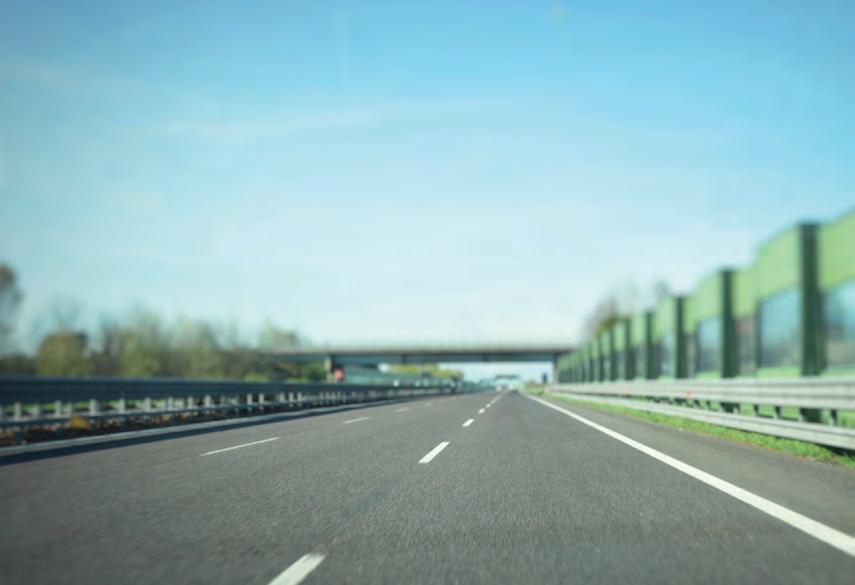
4 minute read
CAPITAL COMPOST
PHIL CORKHILL, OF CORKHILL BROS, EXPLAINS THE PROCESS AND EQUIPMENT REQUIREMENTS ESSENTIAL TO MANAGING CANBERRA’S GREEN WASTE COLLECTION SERVICE.
When the Canberra Business Chamber sought to find the territory’s oldest surviving business in 2019, Corkhill Bros was among a handful of those recognised.
Operating in multiple capacities since 1954, Corkhill Bros has been running a public green organic dropoff facility in the nation’s capital for more than 35 years.
While the drop-off facility always received a steady flow of material, its intake jumped in April 2017. The surge in material followed the introduction of separate green organics kerbside collection in the ACT.
The ACT Government subsequently tasked Corkhill Bros with collection and processing via a government contract. As Canberra does not have individual councils, this means Corkhill Bros manage the entire territory.
By July 2019, all Canberra residents had access to separate organics collection after the service was rolled out progressively over three-years.
As a result, Phil Corkhill, of Corkhill Bros, says the family-run business now deals with an average of 350,000 tonnes of green waste each year.
“As a company, we’re committed to a circular economy waste management and resource recovery approach. This means it’s very important that we achieve high recovery rates and nutrientrich feedstock,” he says.
According to Phil, all organic waste processed at the facility is reused for the benefit of the community, with the resulting material turned into high-quality landscaping supplies and compost.
“We grind our green organics daily, before allowing the product to sit for three months to achieve quality pasteurisation and composting,” he says.
“This allows the particles to break down before additives are introduced and turned into the piles for mixing.”
To manage the process efficiently with minimal downtown, Corkhill Bros work closely with machinery supplier ELB Equipment.
“When dealing with that level of material, operators can’t afford equipment breakdowns or to work with suppliers that don’t remain significantly engaged in the business,” Phil says.
“We manage and process all of Canberra’s green waste, and as such, require efficiencies of scale. ELB can provide those efficiencies, which is why we continue to work with them.”
Phil says Corkhill Bros currently operates a Topturn X55 Compost
Turner, Multistar L3 recycling screen and four Nemus 2700 screens all supplied by ELB at its Mugga Lane Resource Management Centre.
“ELB calls us at least once a month, not just to check in on existing equipment, but to enquire about future needs and maintenance requirements. They are always on the front foot,” he says.
“I consider them more of a partner than a supplier – they’re a very proactive company.”
Corkhill Bros uses the Multistar L3 and Nemus mobile machines for screening and mixing. Phil says both recycling screens facilitate consistent operations, particularly in contrast to drum screens or flatbeds.
“Drum and flatbed screens often suffer significant blockages, which in turn creates inefficiencies,” he says.
“The technical makeup of star screens circumnavigates that problem through curvature, to create a reliable piece of equipment capable of processing organics in all weather conditions.”
The core of the Multistar L3 screen consists of one or two screen decks, with the rotating shafts of the coarse screen deck moving the material horizontally. Phil says particle size can be controlled by varying the rotation of the star shafts.
“The particle size of the material can be changed within seconds using frequency converters on the operator console, within the range determined by the star geometry,” he says.
All functions are monitored by a central control unit, which reports on the current operational status to streamline site operations.
In regard to Corkhill Bros’ four Nemus screens, Phil says he uses the barrels for final screening and blending. “Nemus 2700s are very high production machines, with some great improvements on the previous mustang model,” he says.
With a large steep-walled hopper and high-performance discharge system, the Nemus 2700’s material flow enables 10 per cent more throughput than predecessors, he adds.
“The clearance between the drum and sidewall also allows for a wide range of material inputs, with hole sizes up to 100 millimetres,” he says.
Fine particles are discharged by a cross belt and profiled discharge belt, with the Komtech design preventing material trickle at transfer points to facilitate high capacity.
Corkhill Bros’ Topturn X55 Compost Turner runs in a separate ai157621142791_WMR_Jan20_ThirdPage.pdf 1 13/12/2019 2:30:28 PM

part of the Mugga Lane facility to facilitate open air windrowing, Phil says.
As one of the most widely used compost turners in the world, the Topturn’s frame is designed for heavyduty applications, namely varied and unpredictable municipal green waste.
Phil says the turner’s large hydraulically driven drum, with efficient conveyor and throwing blades, accelerates the turning and rotating process. This, he adds, means all material is mixed before passing through the drum. Since purchasing the machine in 2017, Phil says he has noticed a rise in material quality.
“I’ve been nothing but happy with ELB’s compost turner. It really helps us maintain workflow and product excellence,” he says.
While Corkhill Bros works with multiple manufacturers and suppliers, Phil says ELB’s commitment to service, including spare parts and process maintenance, is a standout in the industry.
“I’m always impressed with their methodology and business model, as it’s very customer focused. We deal with multiple manufacturers and suppliers, and I’d like to think some of them could aspire to the ELB model.”




